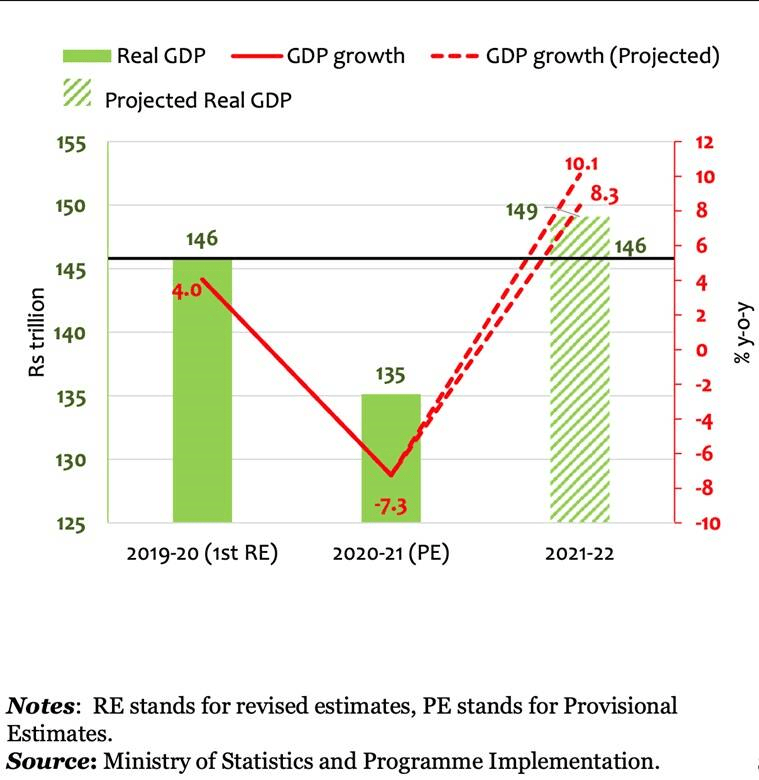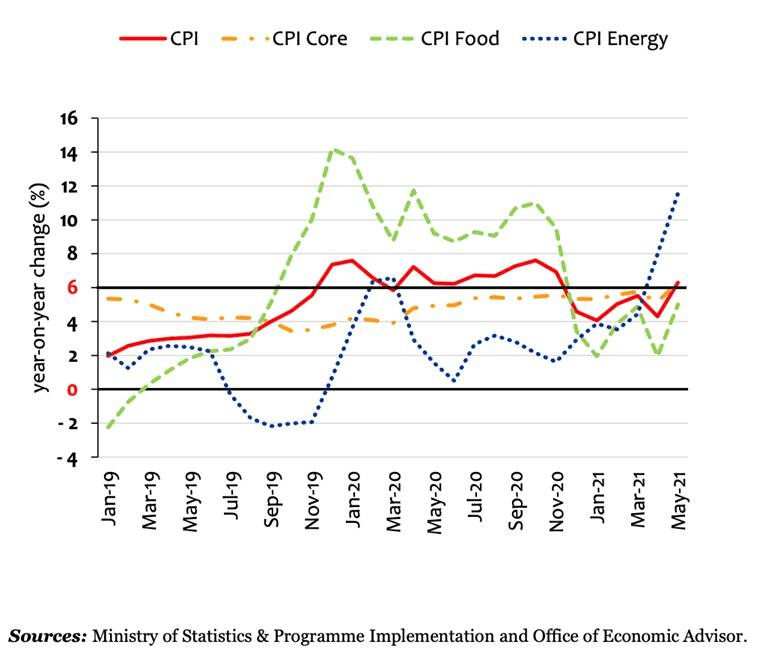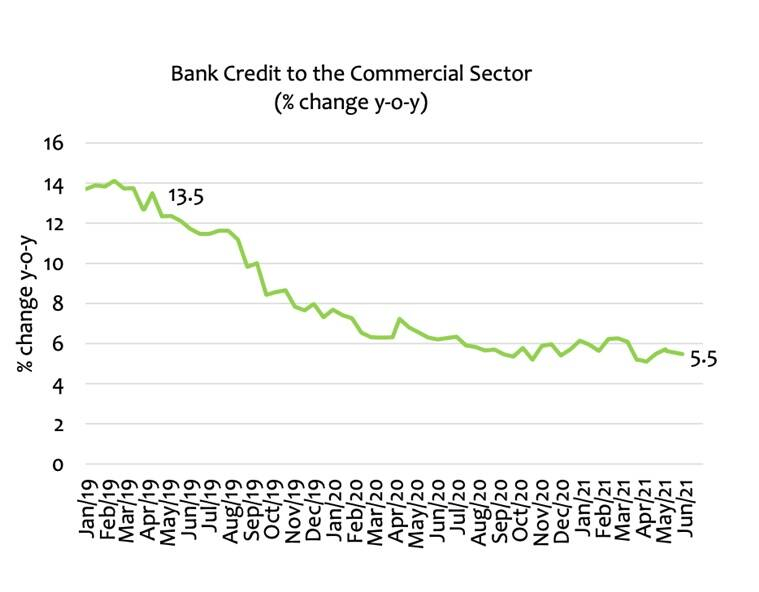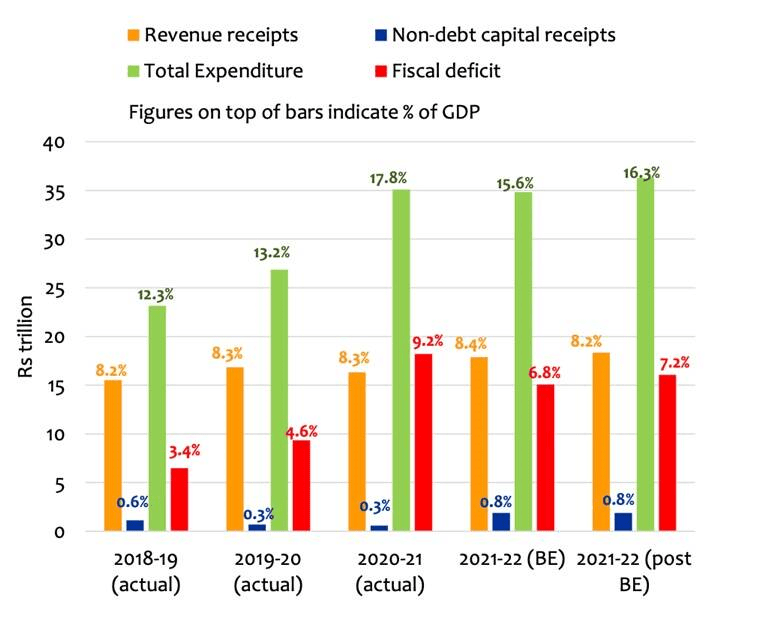[ad_1]
POLITY/ GOVERNANCE/ SECURITY
Topic:
- GS-3: Indian Economy and issues relating to planning, mobilization, of resources, growth, development and employment.
Current Challenges of Indian Economy
Context: As the Indian economy is completing the first quarter of the current financial year, policy makers need to understand the current challenges which Indian economy is facing so to take remedial measures.
Let’s have a look at the current challenges.
1: Two years worth of GDP growth has been lost

Image Source: Indian Express
- In 2019-20, India’s GDP was Rs 146 trillion. In other words, India had produced goods and services worth Rs 146 trillion that year.
- Then, in the last financial year — that is, in 2020-21 — it fell to Rs 135 trillion.
- In the current financial year — that is, in 2021-22 — the GDP is expected to grow back to Rs 146 trillion after registering a growth of 8.3%.
- This would mean that, in terms of overall economic production, India would have lost two full years of growth.
- if there was no Covid disruption and India grew by even 6% in both these years, the total GDP would have reached the level of Rs 164 trillion — that is, Rs 18 trillion more than where India is likely to end up now.
2. Both retail and wholesale inflation is trending up

Image Source: Indian Express
- Headline retail inflation stayed above the RBI’s comfort zone (2% to 6%) between November 2019 and November 2020. But, after a brief period of relief, it has again crossed the 6%-mark in May this year.
- Even the core inflation —calculated by taking away the price rise in fuel and food items- has remained consistently close to RBI’s upper limit.
- In May, WPI inflation was nearly 13%. In other words, even the wholesale prices were rising at the rate of 13%.
3: Poor credit offtake in the commercial sector

Image Source: Indian Express
- The biggest engine of GDP in the Indian economy is the expenditure that Indians undertake in their private capacity. This demand for goods and services accounts for more than 55% of all GDP in a year.
- Even before Covid, the Indian economy had reached a stage where the common man was holding back this expenditure.
- The Covid pandemic has made that trend worse with people either losing jobs or salaries being reduced in the midst of increased health expenses.
- In the absence of consumer spending, the country’s businessmen — both big and small — are holding back new investments and refusing to seek new loans.
4: Inadequate spending by the government

Image Source: Indian Express
- Given that domestic consumers are holding back consumption and domestic businesses are holding back investments (the second-biggest engine of GDP growth), it was incumbent on the third-biggest engine of India’s GDP growth — that is, the government — to spend more and pull the economy out of the current slowdown.
- After being forced to spend more in 2020-21, the government has actually pulled back (as a proportion of GDP) in 2021-22. It is for this reason that its deficit will fall in FY22 as against FY21.
Conclusion
The impacts of this [Covid shock] are more long term than one might imagine and the government has to take expansionary fiscal policy so as to revive the economy.
Connecting the dots:
[ad_2]


